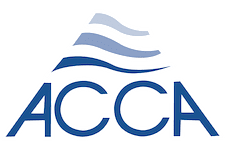It must be somewhat annoying that you must wait a few seconds or even minutes to get hot water after turning on your faucet. Not to mention how much water goes to waste if you cannot bear the cold. Fortunately, a hot water recirculating pump can solve this issue.
What is A Recirculating Pump?
A hot water recirculating pump is a device that helps deliver hot water to your faucets or showerheads almost instantaneously. It does this by circulating the already heated water in your plumbing system to your water heater. This way, there is always hot water ready whenever you need it.
There are two types of hot water recirculating pumps: active and passive. Active recirculating pumps are those that have their timer and switch. Passive pumps, on the other hand, do not have these features. Instead, they rely on the pressure switch of your boiler to turn on and off.
When turning off your faucet after a hot water flow, some of it remains on the line between the faucet and the water heater unit. A hot water recirculating pump is a device that can send that unused hot water into the heater, preventing it from turning back cold over time. The pump will deliver the hot water back to the faucet when you turn it on.
Hot water coming out sooner will cut back your waiting time. There will also be less water to waste. Depending on several contributing factors, installing a recirculating pump may also save you much money in the long run. Although the system is not essential, a recirculating pump is worth considering for your water heater.
A recirculating pump uses electricity and gravity to circulate the hot water. The device is small and mostly compatible with any plumbing system, so it is easy to install. However, this device works best for maximum efficiency when attached near the furthest faucet from the water heater unit.
The Types
As mentioned, there are two types of hot water recirculating pumps, but the difference between them is minor. Both systems will work for you unless you are sensitive about your water temperature.
- Recirculating Pump With Return Line
This pump has two lines that go around the faucet and the heating unit, creating a loop for the water to keep the cycle. The hot water will flow through one line to the faucet from the heating unit. Then, after the faucet is turned off, the water will return through the other line. This system is most convenient because the hot water circulation does not interfere with the cold water flow. However, installing a return line means extra money, unless your house already has one.
- Recirculating Pump With No Return Line
With no dedicated line for the hot water to go back from the faucet to the heater unit, this pump uses the cold water line for this purpose. In addition, the system incorporates a bypass valve to prevent the hot water from getting mixed with the cold water. Also known as the comfort-system recirculation pump, this system costs less than the one with a dedicated line. However, the circulation process may cause the cold water to be lukewarm due to the traces of hot water in the line.
Installing a recirculating pump can be beneficial if you have a problem with your hot water flow. Try talking to a professional plumber to understand your options, along with the advantages and drawbacks of each one; if you can get a cost estimation for both the installation and operation first, even better.
ECM Air Conditioning, with its headquarters located in Boynton Beach, FL, provides air conditioning services within Palm Beach County, Broward County, Martin County, and St. Lucie County. If you’re looking to have a new HVAC system installed, we’re on-call and ready to assist you. So if you’re in need of an HVAC installation, don’t hesitate to contact us today to schedule an inspection! Our HVAC installation experts will check your ductwork, measure, check wire sizes, and more before making recommendations to ensure maximum efficiency and comfort. Call us at 561-295-1763 or contact our HVAC installation team online by clicking here.

















